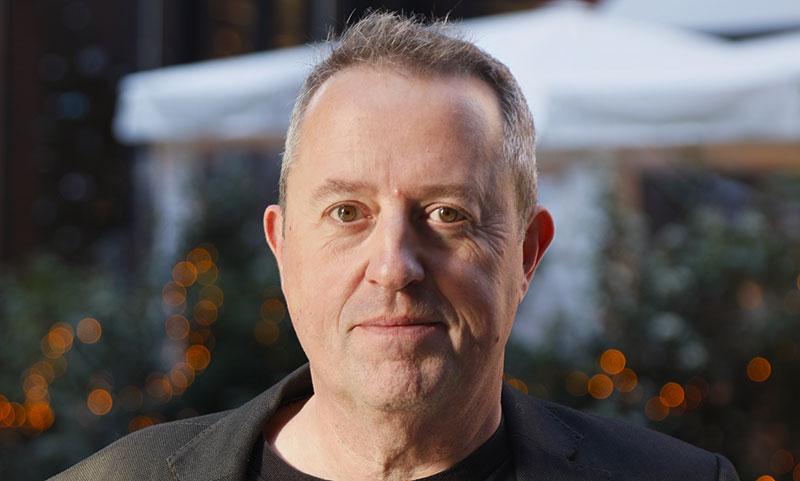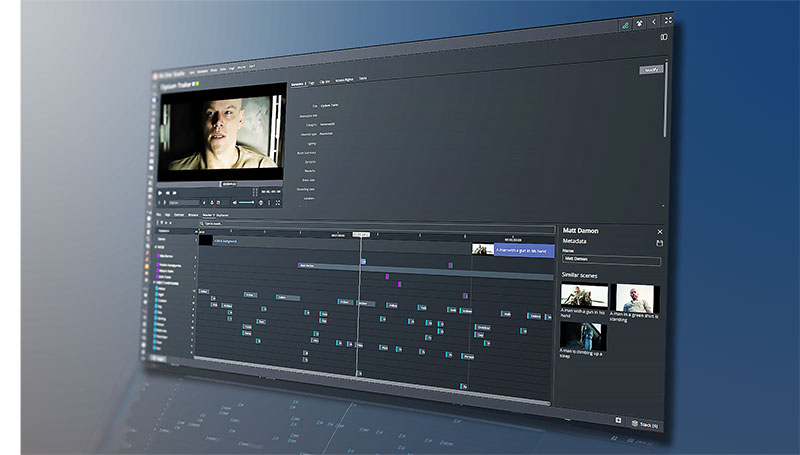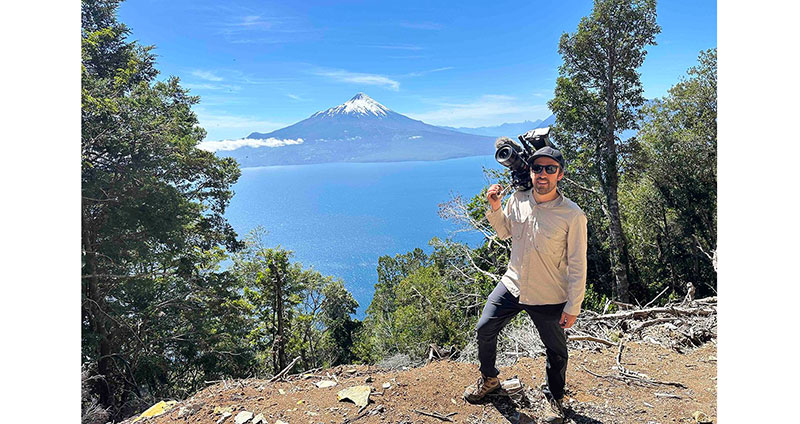Timo Inderfurth graded A Piece of Sky, Best Film award winner at the 2023 Swiss Film Awards, on Baselight, playing a central role in the visual atmosphere of this story set in the Swiss Alps.

Written and directed by Michael Koch, Drii Winter (A Piece of Sky) is a feature film set in the Swiss Alps. In a remote Alpine village, isolated from the outside world, the movie follows Anna and Marco as they experience the joy and challenges of new love, the closeness of family and community. Alongside these themes is the power of the story’s natural environment.
The film, shot by DoP Armin Dierolf, took home the best feature film award at the 2023 Swiss Film Awards. It was graded on Baselight by Timo Inderfurth at Cinegrell in Zurich, who played a central role in creating the visual atmosphere for the film.
Visual Language
When director Michael Koch approached Armin about Drii Winter, decisions about the film’s look were not yet finalised and Michael was open to exploring different approaches.
“Michael had a strong attraction to the academy aspect ratio 1:1.37 (4:3), but in terms of camera movements and blocking, I felt he was looking for something special and not yet crafted,” Armin said. “We completed location tours to discuss the places and people and how we could approach the visual language. We started with the idea of following the actors intuitively with a handheld camera, intending to give them as much space as we could, but then shifted to a more grounded and stage-like visual concept using precise, static set-ups that turned out to be the visual heartbeat of the film.”
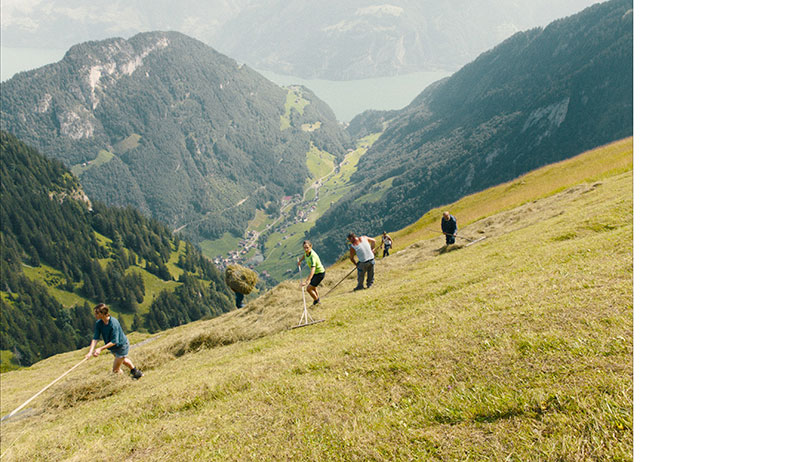
Although initially Michael and Armin wanted to shoot the movie on 35mm film, for a variety of reasons – including high shooting ratio, a limited budget and Covid restrictions – they ended up shooting the whole project digitally.
“When I realised that it wasn’t possible to shoot it all on film, I wanted to shoot the beginning and the end scene plus the choir scenes on 35mm, to have a crystal-clear reference of 35mm in the film and set a tonality for the digital material to match in terms of colours, contrast and texture. I believe that the very first images you see in a film play a key role is establishing its visual nature, from texture, colours and length to perspective, brightness, darkness and so on.
“This combination of film and digital still would have been my preferred choice, but the pandemic hit us hard at the very beginning of the production and things became unstable, so we ended up creating our interpretation of 35mm film fully digital. I made precise tests and created LUTs for the ALEXA Mini to match our digital source material to film stock,” Armin said.
Finding the Look
Timo Inderfurth joined the Drii Winter team before shooting began, which gave him the opportunity to work closely with Armin and the director on the film's look from inception.
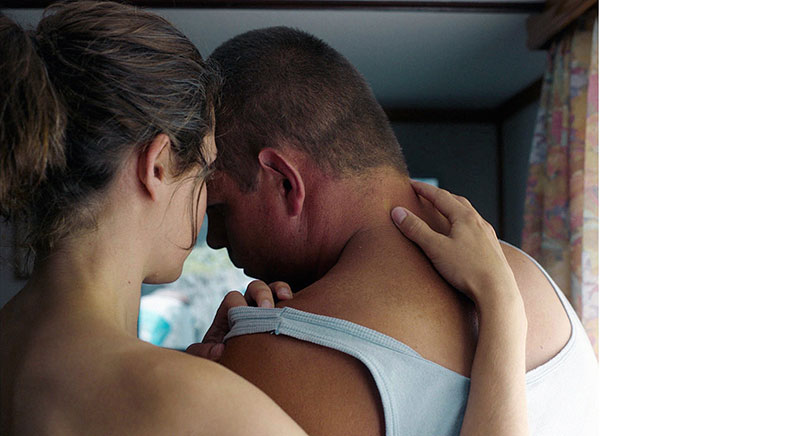
“There were two main goals,” Timo said. “One was to achieve a very film-like look, matching the digitally shot parts to the film – even though, in the end, the whole movie was shot digitally. But it was even more important to the director to stay close to realism and avoid letting the look take over at any point. Apart from the visual references from the look test, which had partly been shot on film, we also had some analogue set photography from the location.”
Timo was always conscious of not letting colour get in the way of or take over from the storytelling. “While the filmic look helps to reduce the range of colours, we kept the saturation of these high enough to make sure we did not get an unnaturally desaturated palette,” he said. “We also went for naturalistic skin tones rather than matching the skin tones of the actors too much, or even doing beauty work. Generally, the movie starts in late spring to early summer and ends in the winter, creating a natural reduction of colour over time due to weather.”
Collective Effort
Timo and Michael had worked together previously and were familiar with one another’s approach, but they had not collaborated with Armin before this project.
“Michael was keen to be part of every decision we took, which I loved,” Armin remarked. “This only makes the collaboration and the cinematic language more interesting. He joined me for all the lens and camera tests and was interested in observing the creation of the LUTs. He also joined me for the whole period of grading, which was perfect because you really try and make all decisions together – especially in creating the kind of realism we wanted.”
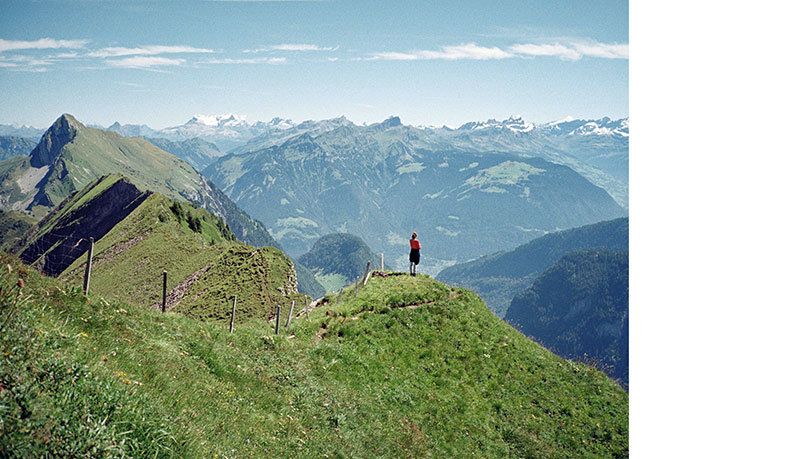
Timo was also with Michael and Armin when they were evaluating the 35mm vs digital camera test in pre-production. “I was especially happy to have the help of someone with lots of experience in grading film stock and doing restoration grades,” Armin said. “Using the LUT we created in camera and adjusting lights, colour and contrast right on the spot made it possible for us to produce the dailies without extra dailies grading.”
Although ’Drii Winter’ is quite a long film, the team captured only a few, long shots for each scene, which made matching in the primaries unnecessary. Then, in the final grade, they re-worked the LUTs and made final refinements for the screen deliverables. Michael also presented Timo and Armin with a collection of 35mm still photos captured during his casting process, all of them portraits of people, which provided a reference for the colours.
Timo also appreciated this level of collaboration. “Having Michael and Armin both present during the whole grading process meant we could go over each shot many times more than would have been possible otherwise. Doing the look tests before the project certainly made things much easier as well.”
Colour Managed Workflow
The DoP and director had shot different look tests on location – both on 35mm film and digitally on the ARRI ALEXA – so matching digitally shot footage to the film's aesthetic became one of Timo’s key challenges. “Even though we went for a colour managed workflow rather than using print emulation LUTs, we still had the Truelight profiles from our in-house film lab available for cross referencing,” he said.
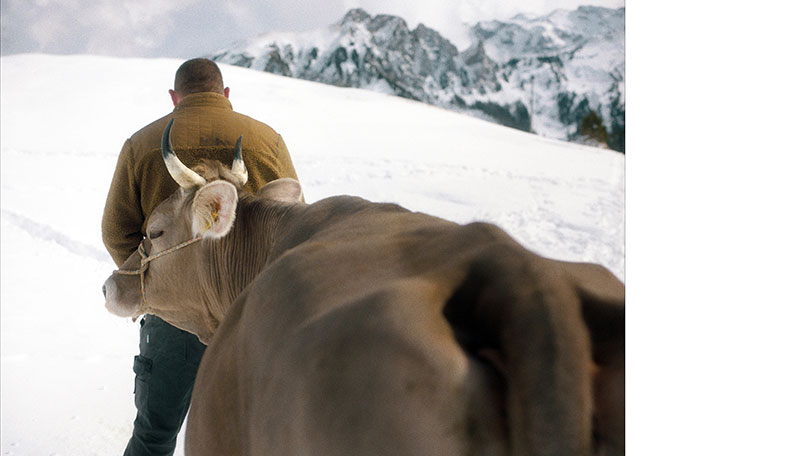
Baselight played a crucial role in managing the colour and maintaining image integrity. “Baselight’s Base Grade is a great tool for keeping the integrity of the image intact, especially in a project like this,” commented Timo. “The look has to be subtle and not distract from the story at any time.”
Instead of limiting the dynamic range with a colour space, video signal or film stock, Base Grade uses algorithms modelled on human vision, and consequently works the same way in every working colour space, and stays consistent for any camera. It converts the image into a linear colour space, restoring the original brightness ratios of the scene. It has four parameters that affect the whole image, and then divides the image into brightness zones with luminance controls per zone, plus colour, saturation and other tools for fine tuning.
“One of my favourite things about working on Baselight is the Blackboard control panel – it is responsive in a natural way and sets Baselight apart from other systems, where you would likely be working from a GUI. The colour management and format mapping are other things that make a colourist’s work much easier, especially on projects with mixed sources. Plus it’s stable, which is important.”
Long Shots
The decision to incorporate a selection of long static shots came during pre-production, as the team discussed the scenes, time space and the rhythm of the film.
“It was an unusual project because the movie is 2.5 hours long, with very few edits,” said Timo. “Though that may sound like an easy job at first, it means that most of the shots are both incredibly long and, in many cases, reveal little or no camera movement. This means we are looking at a static image for much longer than usual, and that each one had to be even more ‘perfect’ than the usual two second shot.”
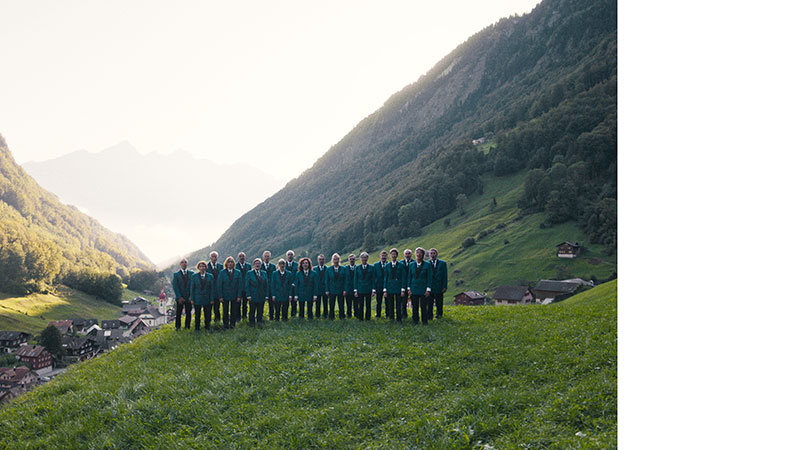
“Without options for cutaways, the challenge is to make the shots work from A to Z in terms of camera movement, lighting and rhythm,” Armin said. “I love those challenges because they make you move away from the ordinary. Nevertheless, we were not dogmatic about that and if we thought we needed another shot or a possible edit, we immediately set it up. I really appreciate that freedom.”
For Timo in post, the footage required meticulous adjustments to ensure the look remained consistent over extended periods. “I had somewhat underestimated the challenges that come with extremely long shots,” he said. “We went over each shot multiple times until we found the right balance and could create the desired look on shots as long as a few minutes in some cases.”
An Authentic Portrayal
Creating a contrast with those extended, very still shots, some had a high level of movement. Certain sequences, like the car rides over switchbacks and through tunnels, were very long with a lot of movement that required intricate keyframing in Baselight.
The snow scenes and landscapes needed careful colour separation and saturation control to capture the beauty of the mountains without becoming overly stylised.
“Getting the greens and blues right in terms of separation, saturation and brightness was very important,” said Timo. “We wanted to show the beauty of the mountains, but not in a postcard-like way. We are very used to grading snow in Switzerland, but it’s always a challenge to keep the desired overall brightness in an image without losing too much detail in the snow, which usually requires quite a bit of keying.”
Drii Winter spotlights the pivotal role of a colourist in shaping a film's visual aesthetics. Its success can be attributed to the authentic portrayal of mountain communities and the realism achieved through both the shoot and the grade. www.filmlight.ltd.uk





